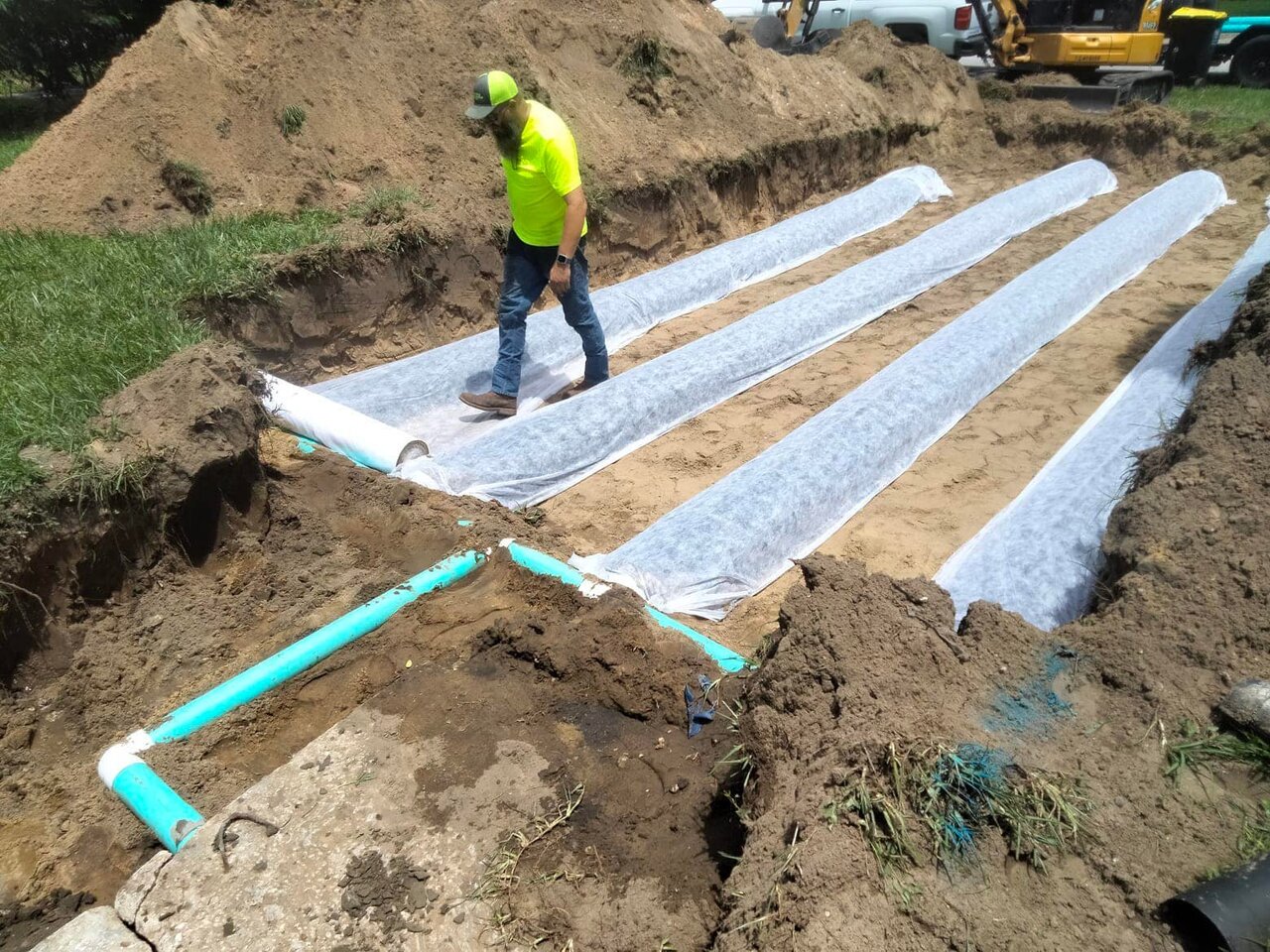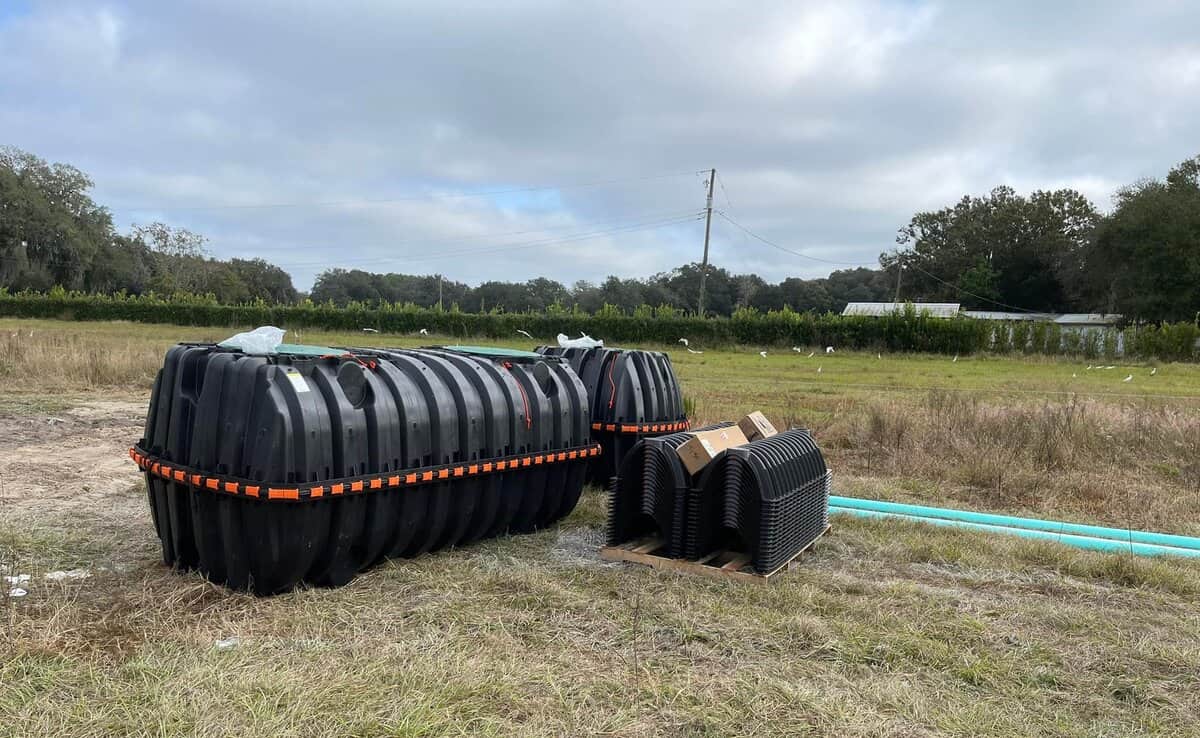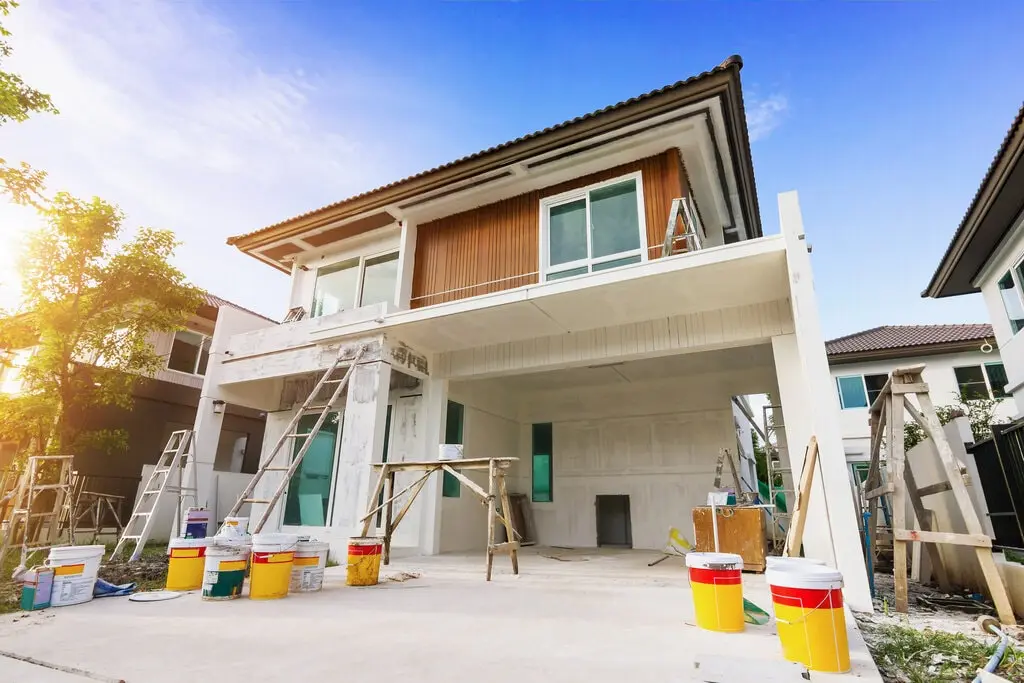One of the most important components of your home’s septic system is the drainfield. A septic drain field, also known as a leach bed or absorption field, is responsible for removing contaminants and impurities from the water that is released from the septic tank. It is the final stop for wastewater from the home before it reenters the environment.
The Basics – How a Septic System Works
Your home’s septic system is responsible for taking wastewater from the home, treating and filtering it, and then allowing it to reenter the environment safely. A typical septic system is set up like this:
- Wastewater from toilets, sinks, tubs, showers, and laundry leaves the home through a drainage pipe.
- The wastewater enters the septic tank, which is a water-tight tank buried underground.
- In the septic tank, solids in the wastewater sink to the bottom, grease and oil rise to the top, and liquid (effluent) makes its way to the drainfield.
- The drainfield is a series of (usually) gravel rows, each with a perforated drain field pipe. In the drainfield, the wastewater gradually discharges from the pipes into the surrounding gravel and eventually into the soil.
- As it percolates through the soil, the wastewater receives its final treatment, as bacteria and other organisms remove pathogens.
- Once released, some of the liquid evaporates, while the rest is absorbed by plants or returns to the aquifer.
Drain Field Installation
Because of its importance, drainfield design is an integral part of any new septic system. There are several factors that must be considered in septic tank drainfield layout.

Size
The drainfield must be of the proper size to accommodate the volume of wastewater that will be produced. This is typically based on the number of bedrooms in the home, but might be adjusted in specific cases.
Soil Density
The soil must be able to absorb the liquid. Dense, non-porous soil will not be able to process as much liquid, so the drainfield may need to be larger. Conversely, soil that is mainly coarse sand and gravel may drain too quickly, allowing sewage that has yet to be fully treated to enter the environment.
A percolation (or “perc”) test will be used to determine the soil’s suitability to process the wastewater. The perc test must meet health department standards.
Once the septic system is installed, it is important to follow recommended guidelines for care, including the leach field. Here are a few suggestions to help you avoid future drain field replacement cost:
- Be cautious about what gets put down drains. Solids other than human waste can clog pipes and create issues in the septic tank, but putting the wrong things into the system can also impede the proper functioning of the drainfield and cause problems. One of the main culprits is grease or oil that can make its way through the system and into the drainfield. This can clog drainfield pipes (grease capping) and lead to sewage backups.
- Avoid compacting the soil in the drainfield. The area above and around the drainfield is critical to the proper functioning of the septic system. Compacted soil will absorb and release less water, slowing the filtration process and potentially causing serious issues. Soil can become compacted by driving or parking on the drainfield, or by putting structures like decks, patios, or pools on top of it.
- Plant roots are drawn to water, so the area around drainfields is very attractive to them. Grass and other groundcovers with shallow roots are fine, but trees and other deep-rooted plants can quickly cause problems by clogging or breaking pipes in the drainfield.
- Avoid overloading the septic system with water, especially in periods of heavy rainfall. As the drainfield gets saturated, it will take longer to process wastewater that is flowing in from the septic tank. This slowdown can cause a backup in the tank, which can then lead to sewage backing up in the home.
- Have the drainfield inspected as part of regular septic inspections and septic tank pumping. An experienced septic professional will look for signs that the drainfield is not functioning properly and make recommendations for drain field repair or drain field replacement if necessary.
Signs of Drain Field Problems
Drainfields can go many years without problems, but it is important to know the signs that an issue may be developing so that it can be corrected quickly.
- Toilets, tubs, and showers that are draining slowly could be a sign that the drainfield is not functioning properly, which could cause the septic tank to fill with water.
- Bad smells are a sign that the sewage is not being properly treated. The cause could be an issue with the septic tank, leaking pumps, or the drainfield. A septic inspection should be done to identify the source of the odor.
- Lush plant growth could indicate that excess waste is getting through the drainfield, acting as a fertilizer.
- Water pooling above the drainfield that is not caused by recent rainfall or irrigation can be a sign that the soil is not absorbing the effluent quickly enough.
- Alarms coming from septic pumps or the high water alert system can be caused by issues with the drainfield.

Drainfield Repair
If there are issues with your septic drain field, it may be possible to repair them rather than do a new drainfield installation. A few options that a septic professional might suggest are:
- Removing clogs caused by solids
- Adding special enzymes additives to remove excess grease (“grease capping”)
- Septic tank pumping or septic tank cleaning
- Soil fracturing to allow more oxygen to reach the absorption bed
- Cutting and killing roots growing near the drain field
If none of those options are viable, the septic professional will recommend replacing the drainfield (and sometimes the entire septic system). While no homeowner wants to bear the cost of a septic system replacement, the importance of removing and properly treating wastewater cannot be overstated. A malfunctioning septic system is hazardous to homeowners, pets, wildlife, neighboring properties, and other sources of water.
Septic and Drainfield Services in and Near Lakeland
As one of Lakeland and central Florida’s top septic contractors, Septic and Drainfield Depot can assist with all your septic needs, including drainfield installation, inspection, and repair.
We also provide residential and commercial septic services in:
- Septic tank pumping, cleaning, installation, and inspection
- Lift station installation and maintenance
When you need septic installation or repair, we offer secure septic financing that allows you to make predictable monthly payments without tapping into your home’s equity.
Contact us today for a free inspection.







